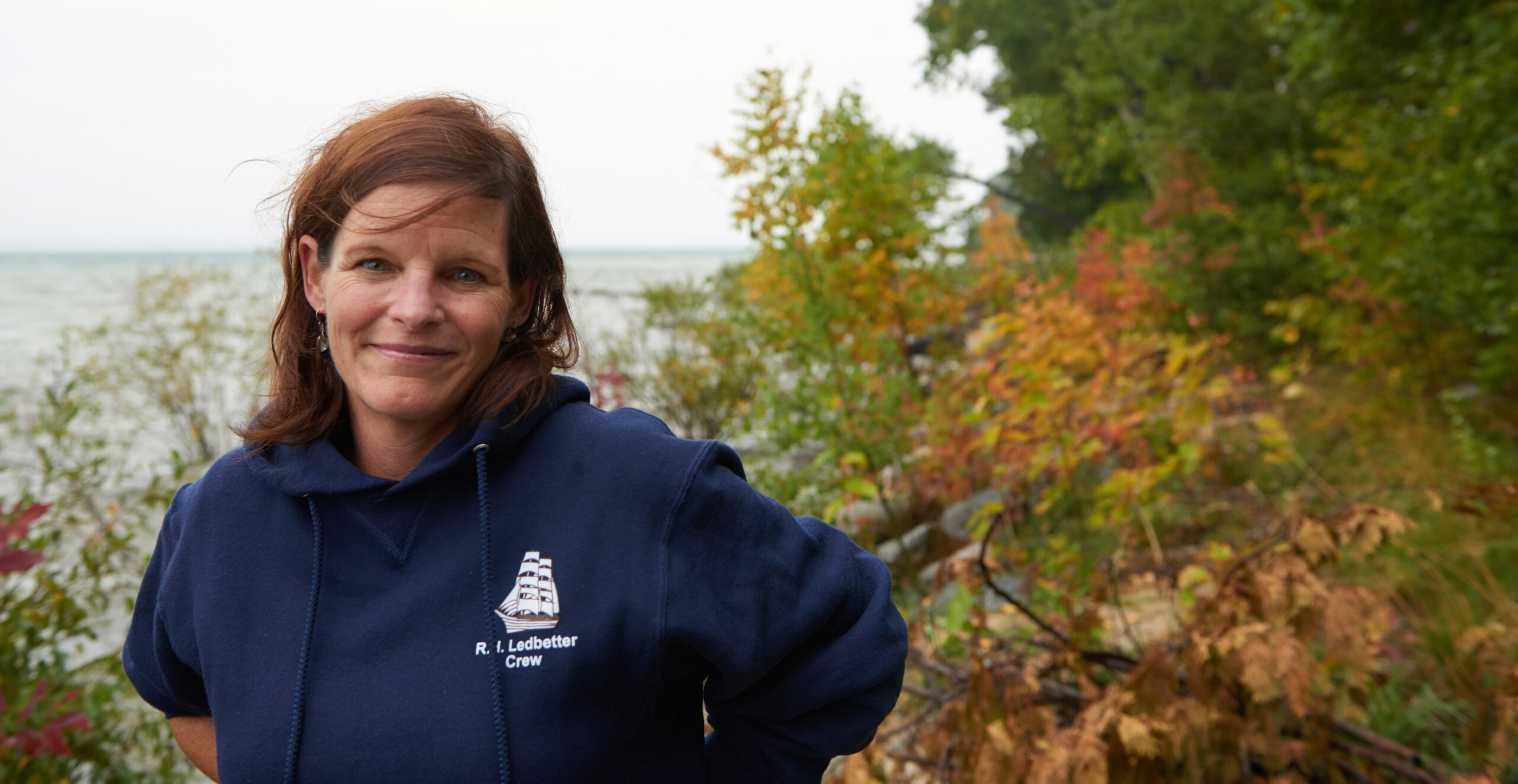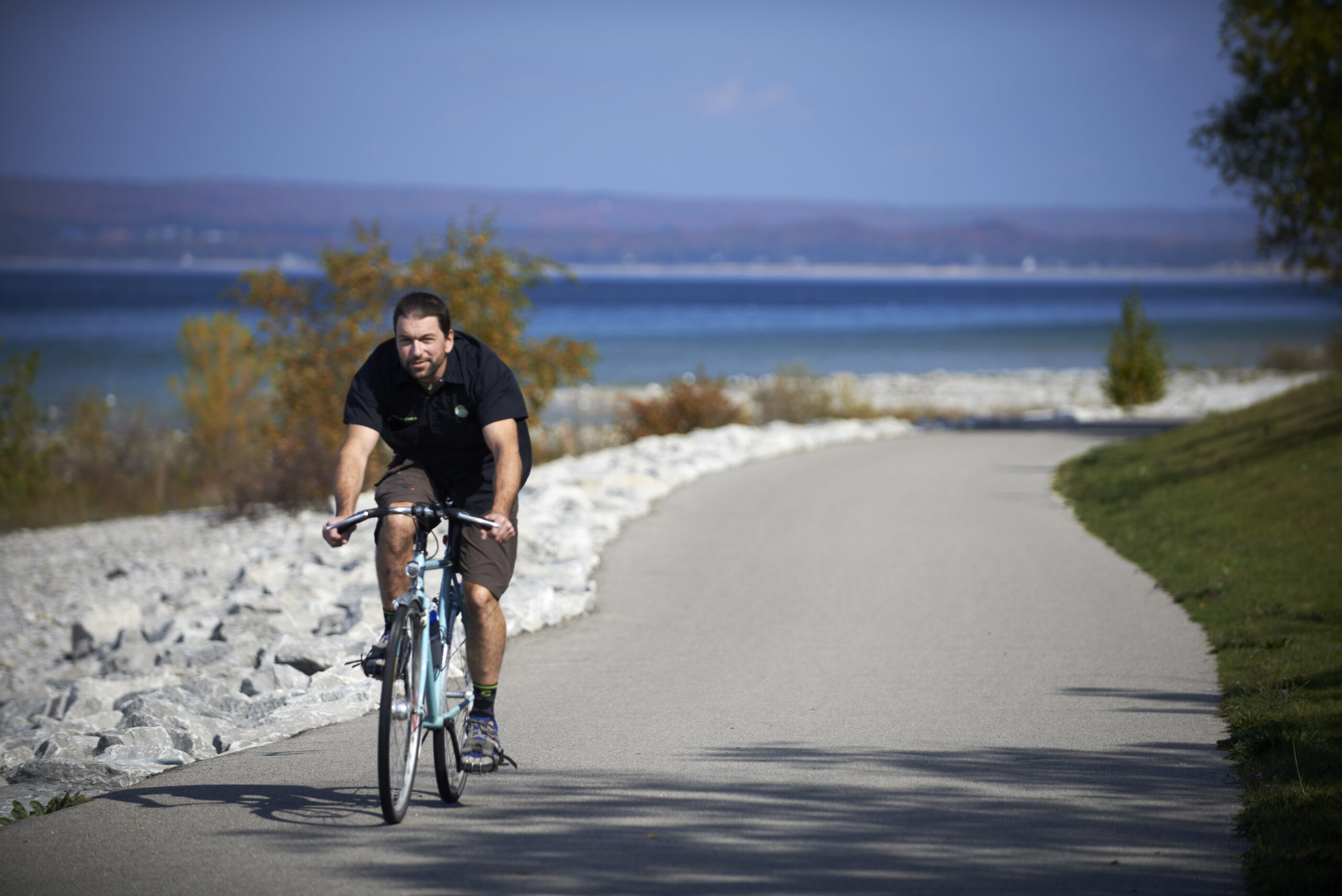In the last one hundred years, the landscape of this country has been changing faster than it’s being protected. Alarmed at the disappearance of mature forests, scenic prairies, essential biodiversity and “breathing room,” land conservation groups have worked to protect an estimated 40 million acres that are now set aside as wildlife and plant habitat, act as buffers of our Great Lakes water resources and provide public access to nature. Thanks to efforts by Little Traverse Conservancy, a generous chunk of that protected land is located in Northern Michigan.
When Tom Bailey, executive director of the Little Traverse Conservancy, talks about “protecting” land, he refers to conservation in its oldest sense, “…for use in perpetuity, not to be depleted, but to be sustainable.” The Conservancy has been working with landowners to protect Northern Michigan’s natural features since it was founded in 1972.
“We’re protecting land for both nature and for people,” says Tom, dispelling the notion that protected land means lots of No Trespassing signs. “In fact, the signs identifying the properties are an invitation for people to come and enjoy them!” he adds. “The focus in this country used to be on subduing the hostile wilderness, building mills and factories and protecting civilization from the ravages of the wild. Now we know we need to set aside places in perpetuity where wildlife can reproduce and live unfettered, where plant communities can live undisturbed, where people can come to recharge, where they can walk their dog or ski in the winter. It’s all about balance.”
Today, the organization monitors annually about 57,000 protected acres – 275 scenic and diverse parcels in Chippewa, Mackinac, Emmet, Cheboygan, and Charlevoix Counties that range in size from a single lot to 1,000 acres in the Les Cheneaux islands. About 200 of the Conservancy’s Northern Michigan parcels are designated nature preserves, including 50 that offer 107 miles of maintained trails.
To nurture its commitment to protecting land, the Conservancy also provides environmental education programs at no charge to nearly 7,000 local children each year. They learn firsthand some of the most basic and important functions of the natural world – for example, that mature trees pump oxygen into the air, that soil filters rainwater and wetlands help moderate the effects of flooding. And though they probably aren’t aware of it, tests show that kids do better socially, emotionally and cognitively when they spend time outdoors.
“Our cities are sprawling,” says Tom, who has watched the steady development of Northern Michigan for decades and sees serious issues such as the draining of critical wetlands. “We need to take a step back and figure out what’s reasonable and what’s appropriate, so we can strike a balance between development and conservation. We need to appreciate that we can’t recreate a forest that took 1,000 years to grow here.”
The Frey Foundation is proud to have supported the visionary efforts of this locally based and locally governed conservancy for more than twenty five years, providing more than $1.5 million for their commitment to and alignment with the Frey Foundation’s funding priorities:
- Protecting critical lands including farmland, parkland, and natural habitat areas
- Protecting watersheds, lakes and streams
- Expanding and connecting regional trails and greenways


